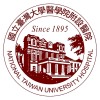A Family-Centered Intervention Program for Preterm Infants: Effects and Their Biosocial Pathways
Premature Birth

About this trial
This is an interventional prevention trial for Premature Birth focused on measuring Environment, Gene, Intervention, Neurodevelopment, Pathways, Preterm infants
Eligibility Criteria
Inclusion Criteria:
- birth body weight < 1500 grams
- gestational age < 37 weeks
- parents of Taiwan nationality, married or together at delivery, and northern family residing in greater Taipei and southern family residing in greater Tainan, Kaohsiung, or Chiayi
Exclusion Criteria:
- severe neonatal and perinatal diseases (e.g., seizures, hydrocephalus, meningitis, grade III-IV IVH and grade II NEC)
- congenital or chromosome abnormality
- mother < 18 years, with mental retardation or history of maternal substance abuse at any time (smoking, alcohol, and drug)
Terminated Criteria:
- diagnosis of brain injury (e.g., PVL, stage IV ROP or greater)
- severe cardiopulmonary disease requiring invasive or non-invasive ventilator use at hospital discharge
- hospital discharge beyond 44 weeks' post-menstrual age.
Sites / Locations
- National Cheng Kung University Hospital
- National Taiwan University Hospital
- Mackay Memorial Hospital
Arms of the Study
Arm 1
Arm 2
Experimental
Other
Family-centered intervention program
Usual care intervention program
FCIP: family members were encouraged to present in all intervention sessions included 5 in-hospital intervention, 7 after-discharge interventions (0, 1, 2, 4, 6, 9, and 12 months of corrected age), and neonatal follow-up at 0, 1, 6, 12, 18, and 24 months of corrected age.
UCP: family members were invited to present at least one session of the 5 in-hospital intervention session. Parents and infants in the UCP group received 7 after-discharge phone calls (0, 1, 2, 4, 6, 9, and 12 months of corrected age) and neonatal follow-up at 0, 1, 6, 12, 18, and 24 months of corrected age.
Outcomes
Primary Outcome Measures
Secondary Outcome Measures
Full Information
1. Study Identification
2. Study Status
3. Sponsor/Collaborators
4. Oversight
5. Study Description
6. Conditions and Keywords
7. Study Design
8. Arms, Groups, and Interventions
10. Eligibility
12. IPD Sharing Statement
Learn more about this trial
